Do you ever wonder at the many different types of microphones found in studios? Some are great for vocals, others for recording instruments, and some can do a bit of everything. All these microphones types have specific jobs, and sound engineers do a great job of using them.
The world of microphones and the science of sound is fascinating. Different technologies have been developed to pick up and translate sound into electrical signals, and each of them has its upsides and downsides.
Whether you are recording in your bedroom or a professional studio, your only goal is to record high-quality sound Trusted Source Sound quality - Wikipedia Sound quality is typically an assessment of the accuracy, fidelity, or intelligibility of audio output from an electronic device. en.wikipedia.org . Thus, the aspiring musician needs to be well informed about microphones to become better at performing and recording. This comprehensive guide lays the groundwork for understanding:
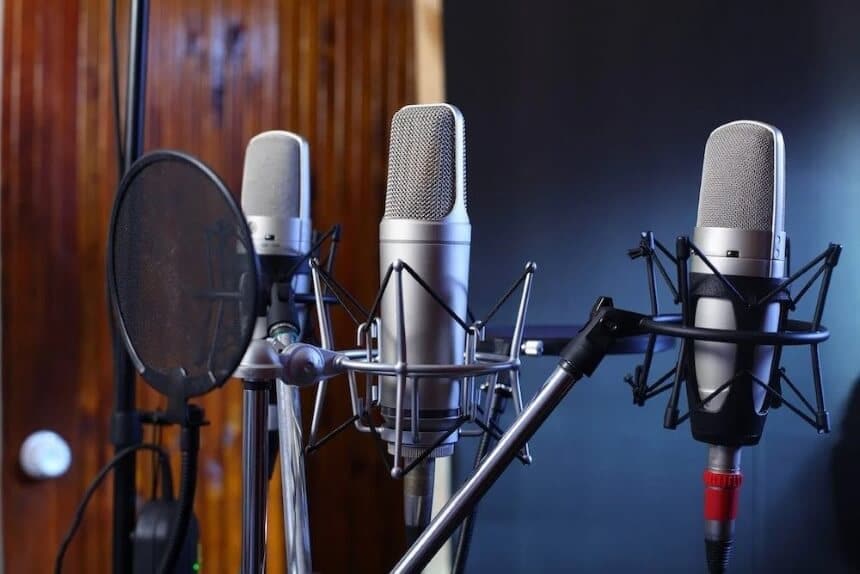 There are several ways to categorize microphones by type. The first method refers to the actual technology the microphone is based on. In scientific terms, this is about how a particular microphone transduces sound. If you think about microphones this way, then we have:
There are several ways to categorize microphones by type. The first method refers to the actual technology the microphone is based on. In scientific terms, this is about how a particular microphone transduces sound. If you think about microphones this way, then we have:
The next method of categorizing microphones is based on polar or pick-up patterns. That means how the microphone reacts to sound coming in from different directions.
Other classifications are mainly based on application and purpose. Microphone types and uses vary depending on how well they perform at different frequencies, sound pressure levels (SPLs), noise cancellation, and how they are connected to the sound recording system (wireless, XLR connections, power, etc).
With the preliminaries over, it’s time to take a better look at each of these types of microphones and learn how each one can help you perfect your music recording.
Polar patterns are the sound pickup patterns as they appear in 3-D space. In other words, they are representations of how the microphones interact with sound as it comes in from all directions. The different polar patterns give a visual depiction of which directions microphones are “listening” or active, and which ones they block out.
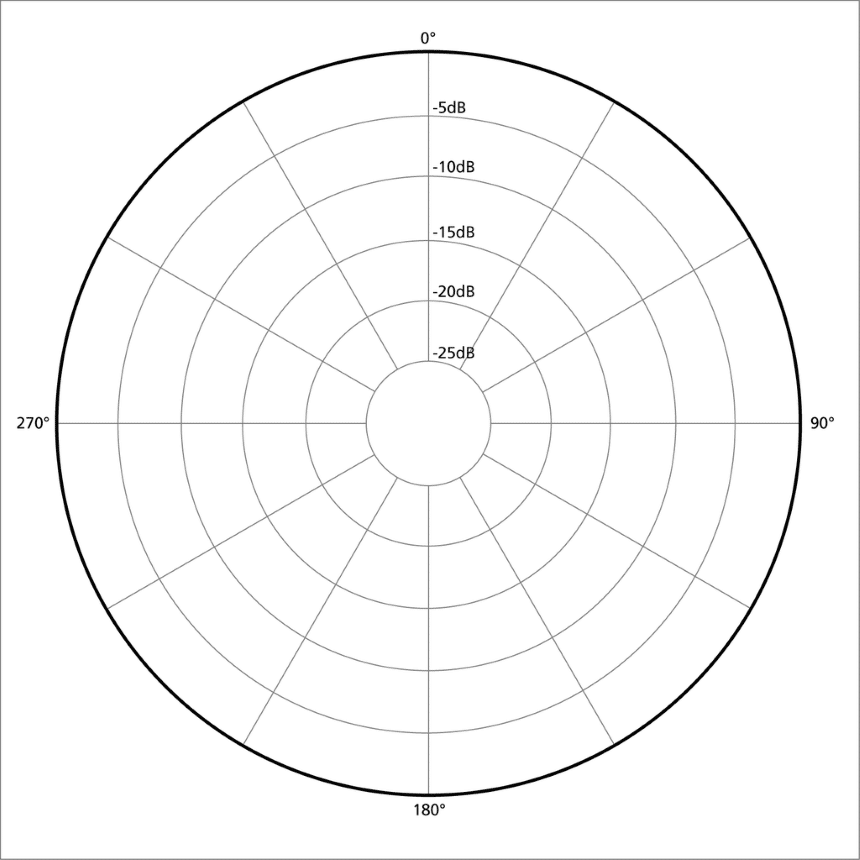 Omnidirectional microphones are equally sensitive to sound from all directions. They pick up sound from the front, sides, and rear, which is why we can represent their polar pattern with a circle.
Omnidirectional microphones are equally sensitive to sound from all directions. They pick up sound from the front, sides, and rear, which is why we can represent their polar pattern with a circle.
Omnidirectional microphones are practically immune from the proximity effect and pick up a more full-bodied and natural sound from the room. Plus, they allow the artist to play on with little thought about mic positioning.
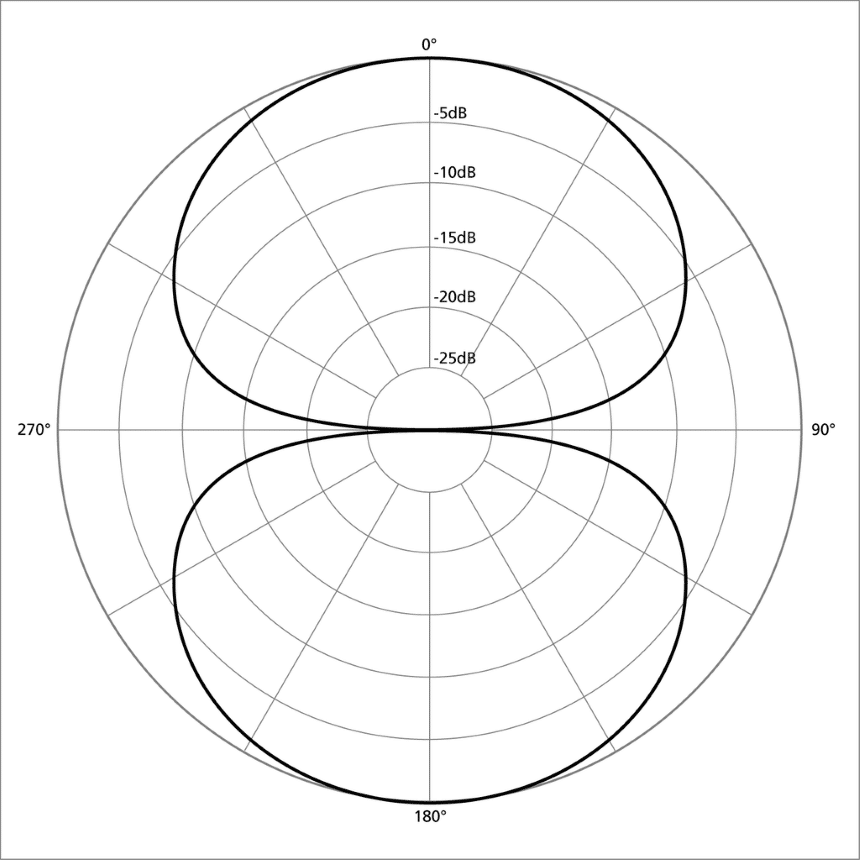 These microphones capture sound equally well from the front and rear because they measure the pressure difference between the two sides of a diaphragm. This means that figure-8’s have excellent sound rejection from the sides, because no pressure difference would be created by axial sound waves.
These microphones capture sound equally well from the front and rear because they measure the pressure difference between the two sides of a diaphragm. This means that figure-8’s have excellent sound rejection from the sides, because no pressure difference would be created by axial sound waves.
Figure-8 microphones are mostly used where it is important to record bi-directional sound sources such as during one-on-one interviews. Singing instrumentalists and duets also make use of these often.
Other times when you may need a figure-8 mic is when recording far away sound. Specialist figure-8 microphones called shotgun mics are used by film crews for just this purpose. However, these mics tend to have an amplified proximity effect.
Figure-8 microphones are not very popular nowadays, especially due to the rise of multi-directional microphones. However, they still remain the best interview microphones for one-on-one conversations. They are also great for recording warmer sounds caused by natural room reverb.
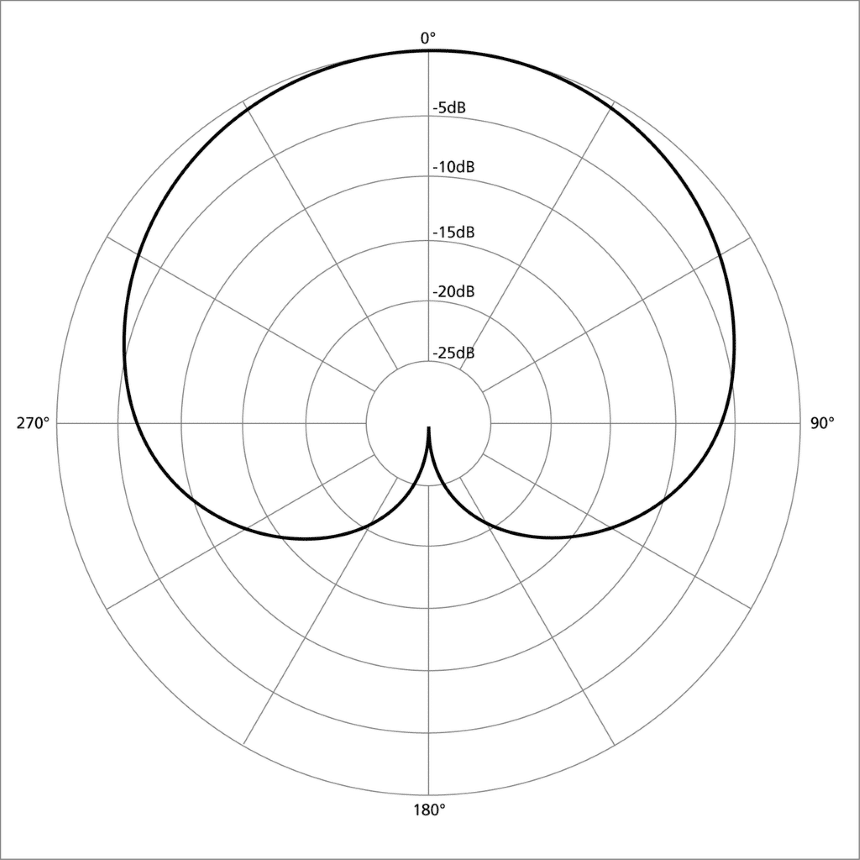 These are also known as uni-directional microphones because they have excellent sensitivity at the front, less sensitivity at the rear, and block the sides. Electrically, their signals are a combination of Figure-8 and omnidirectional patterns, which means that they have double the front sensitivity and half at the rear.
These are also known as uni-directional microphones because they have excellent sensitivity at the front, less sensitivity at the rear, and block the sides. Electrically, their signals are a combination of Figure-8 and omnidirectional patterns, which means that they have double the front sensitivity and half at the rear.
Cardioid microphones are so named because of their heart or kidney-shaped polar pattern. They tend to have maximum sensitivity at the front which tapers towards the sides to be half as sensitive at right angles – 900 and 2700. Cardioid microphones block all sound from the rear.
They can also be further subdivided into supercardioid and hypercardioid microphones. These two categories are very similar to cardioid microphones but have an even narrower pickup angle or axis. They are a kind of specialist polar pattern for special studio applications.
However, cardioid microphones are more prone to plosives, sibilance, and the proximity effect due to their increased sensitivity. They find uses in all kinds of applications in both professional and amateur recording. You can use them for vocals, instruments, bands, and more.
One of the most popular cardioid microphones is the Shure SM57-LC, a cardioid dynamic mic which is very affordable while being a professional-grade mic that is perfect for all kinds of applications. It’s so good that it has a 4.9-star rating and has become an industry standard and a staple at every studio and theatre.
Multi-pattern microphones have switches that you can use to change their polar patterns. Thus, instead of having many different microphones, you can have just one with different modes for convenience.
All multi-pattern mics have a combination of capsules whose output signals can be combined in various ways to produce different polar patterns. Prosound Training has a little more on how this works Trusted Source The Magic Behind Multi-Pattern Mics This article will take a closer look of how multi-pattern mics work. www.prosoundtraining.com , but:
In your search for the perfect microphone, you are likely to come across the names “large diaphragm” and “small diaphragm.” These terms refer to the size of the membrane used in the microphone’s capsule.
The distinction between diaphragm sizes is specific to condenser microphones. Dynamic mics have a moving coil, whose size doesn’t matter much. However, to a condenser microphone, the size of the diaphragm membrane affects the mic’s sensitivity, noise level, sound pressure level handling, dynamic range, and more.
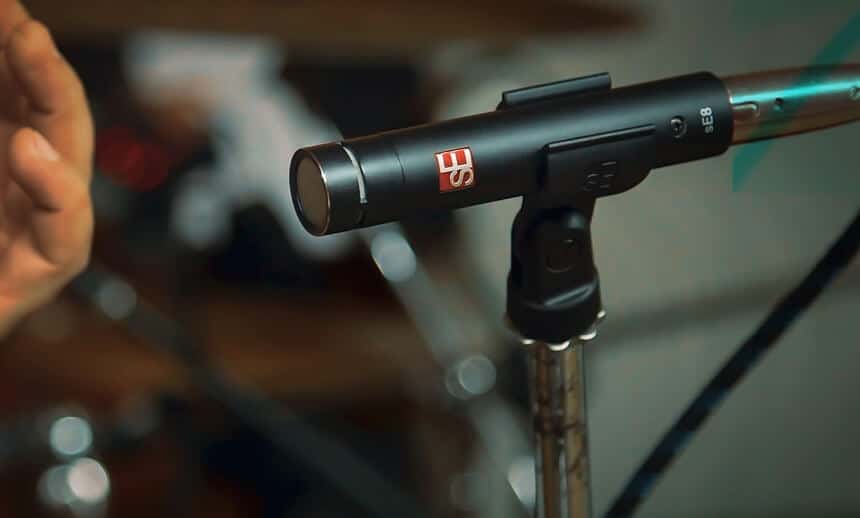 These are thin microphones whose membrane is typically ½” or less in diameter. While there are no hard and fast rules about membrane size and specifications, this rule can be a good rule of thumb.
These are thin microphones whose membrane is typically ½” or less in diameter. While there are no hard and fast rules about membrane size and specifications, this rule can be a good rule of thumb.
Due to their small diaphragm size, small diaphragm microphones tend to be very slim and are referred to as “pencil mics.” They offer a more consistent sound pattern even at high SPLs and frequencies.
Due to this, they have one of the highest sound fidelity of all are wonderful for recording piano, acoustic instruments such as guitars and violins, as well as being excellent overhead mics for choirs and orchestras.
The only problem with small-diaphragm mics is that they produce a faint electrical signal that needs more preamplification. Thus, they need top-quality preamps to keep noise levels down.
These microphones combine the best aspects of small and large-diaphragm mics. They have a warmer sound than small diaphragms, as well as better frequency response than large diaphragms. They are common in live recording studios but are really essential when you are just starting out.
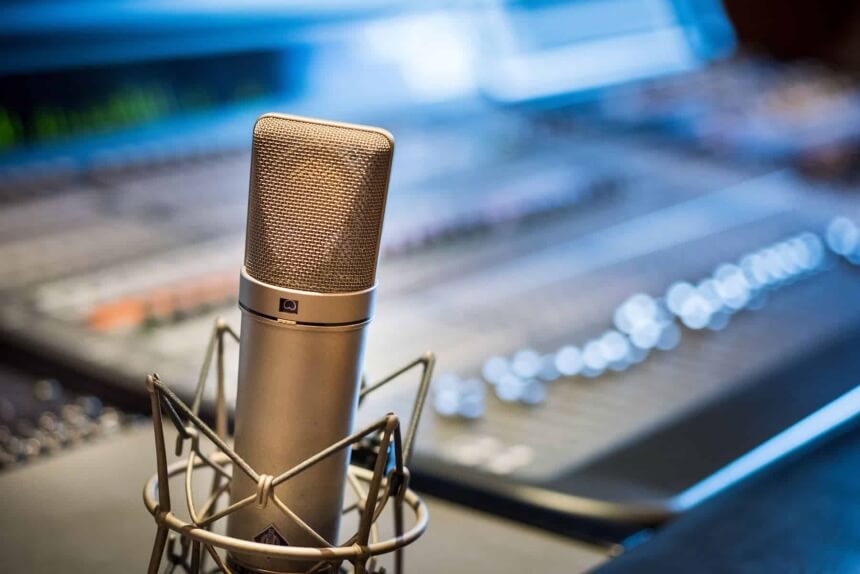 The rule of thumb is that large-diaphragm microphones have a membrane that is 1” or more in diameter, although some have a slightly smaller one. The larger membrane has more mass and vibrates more, which means it produces a higher signal voltage.
The rule of thumb is that large-diaphragm microphones have a membrane that is 1” or more in diameter, although some have a slightly smaller one. The larger membrane has more mass and vibrates more, which means it produces a higher signal voltage.
This is important because it means large-diaphragm microphones require less signal preamplification, reducing the noise-to-signal ratio. This noise performance is what makes them a darling at the studio.
Large-diaphragm mics can pick up subtle sound nuances better than small diaphragms, which produces some interesting advantages, but it also makes them less responsive to transient sound waves. It also means that they can distort at high SPLs or not reproduce low frequencies accurately.
Despite that, almost anything goes with large-diaphragm microphones. They are great for recording vocals and solo instruments, so long as the SPLs aren’t too high and the frequencies don’t go too low. Their rich, warm color makes them a perfect option for beginners and professionals alike, especially those who love to record pop or folk music.
The three main categories of microphones you are likely to come across in the recording studio are dynamic, condenser, and ribbon mics. We already mentioned that they all rely on different transducer technology, which also means that they have very different properties.
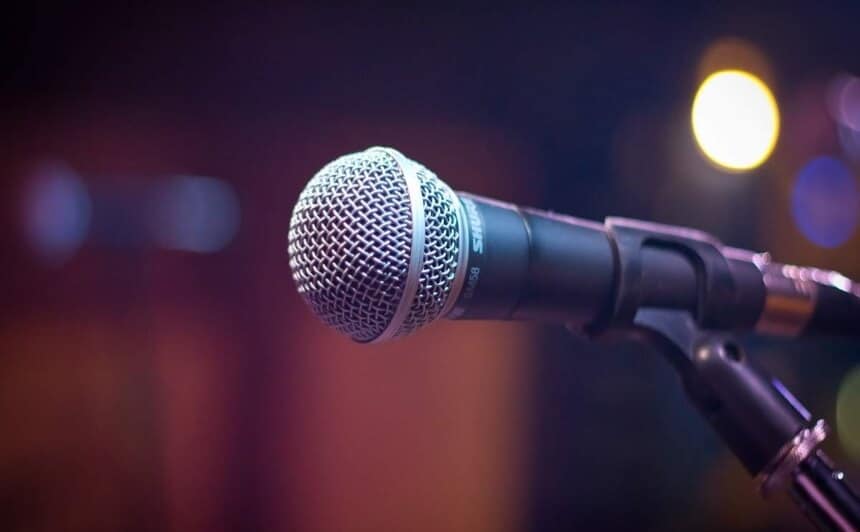
Also called moving coil microphones, dynamic microphones do not require external power or preamplification. The electrical signal they produce is stronger than condenser mics, especially when the vocals being recorded are already very loud.
Dynamic microphones also offer a smooth, extended response with good frequency response and cardioid polar patterns. Even better, they need no phantom power and are among the most affordable, low-maintenance microphones.
Despite a lower sensitivity and frequency response, dynamic mics are used extensively for live performances and for miking loud percussion instruments like drum kits. They are also a first-choice pick for many artists who are just starting out on a budget.
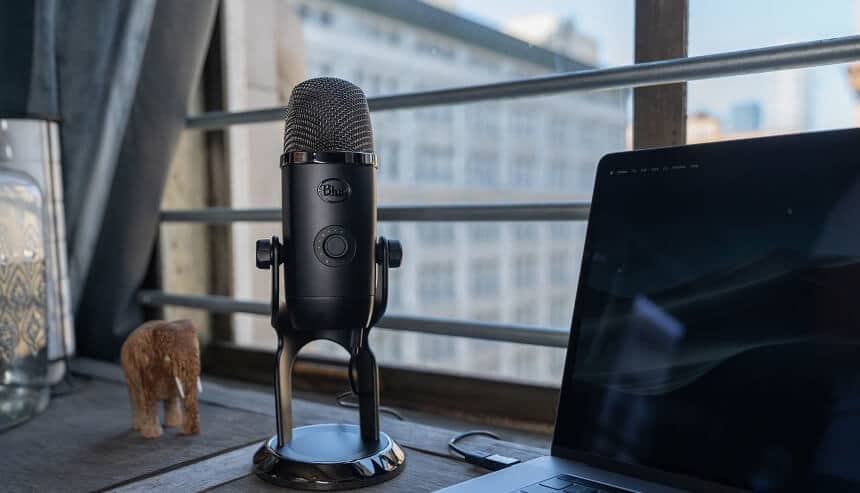 Condenser microphones use a thin diaphragm stretched close to a charged backplate, effectively creating a capacitor. When the membrane vibrates, the capacitance changes and induces an electric signal.
Condenser microphones use a thin diaphragm stretched close to a charged backplate, effectively creating a capacitor. When the membrane vibrates, the capacitance changes and induces an electric signal.
Both the backplate and membrane need to be charged, which means that condenser mics require an external power supply either from a battery or through phantom power.
This kind of assembly is very sensitive due to the low mass of the diaphragm, which makes it easier to follow sound wave patterns. It gives condenser microphones the best frequency and transient response of all microphones.
However, since the signal produced by the diaphragm is very low, condenser microphones require extra circuitry to enhance and amplify the signal. Coupled with their sensitivity, it makes these microphones susceptible to noise. They also have trouble with handling high SPLs.
This is why it is important to buy only top-notch models such as the popular Blue Yeti USB Mic. The Blue Yeti is actually a multi-pattern microphone that you can adjust to create cardioid, omni-directional, or bi-directional polar patterns for your needs. It creates broadcast-quality sound reproduction and remains the best USB microphone for streaming, recording at home, and more.
Condensers used to be expensive, but now they appear regularly on some of the best budget microphones. They find a lot of use for recording vocals, stringed and wind instruments, orchestras, choirs, and more. The different types available – large, small, and medium diaphragm – often dictate their specific application.
 If we’re being particular, ribbon mics are actually a type of dynamic microphones. They use the same basic technology but have a metal foil or ribbon instead of a coil. Their design allows them to pick up air velocity as well as soundwaves, making them extra-sensitive to higher frequencies while retaining a warm natural tone.
If we’re being particular, ribbon mics are actually a type of dynamic microphones. They use the same basic technology but have a metal foil or ribbon instead of a coil. Their design allows them to pick up air velocity as well as soundwaves, making them extra-sensitive to higher frequencies while retaining a warm natural tone.
Ribbon mics were once very successful in the radio industry, which is why they sound “vintage.” Today, they remain the ultimate microphone for sound connoisseurs who desire high sound fidelity.
Ribbon microphones typically have a figure-8 polar pattern, which makes them perfect for picking up the vibrant, natural feel of a properly treated studio
However, the construction of ribbon mics means that they are fragile and require a lot of tender love and care. In fact, you shouldn’t even tap on these to test the mic or plug them in when phantom power is still on as this can damage the sensitive ribbon.
Additionally, their sensitivity produces a strong proximity effect, and they are also susceptible to plopping and sibilance. That also means they are not designed to handle high SPLs from loud sources.
Like the high-precision instruments they are, ribbon microphones are only used in highly professional environments to record vocals, acoustic instruments, and in various mic arrays to enhance the recording of large groups of performers. If you’re interested, we compiled a guide to the best ribbon microphones.
By now, you can tell that each kind of microphone tends to do very well in specific applications, so sound engineers and producers like to use them that way. There are even application-specific microphones today that are used only for unique purposes.
This is good because it also helps you know what kind of microphone will be best for your particular needs. Unless you are looking for an all-rounder, you might consider picking up a specialist microphone for unique recording needs.
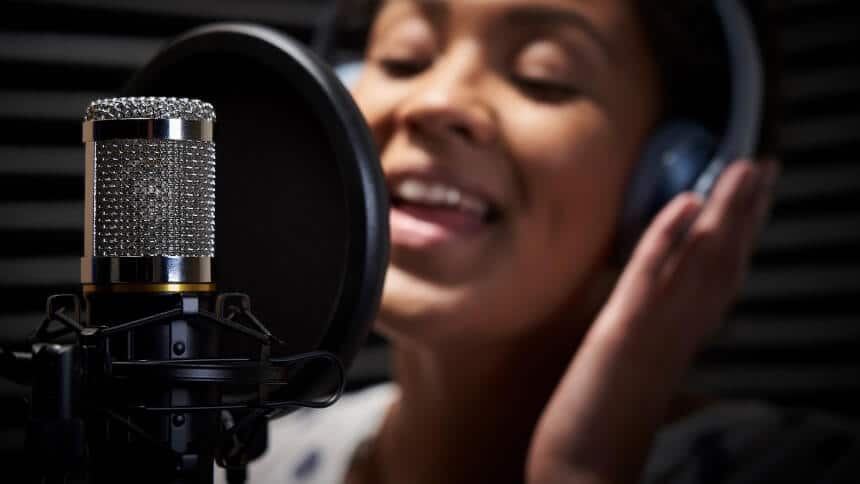 It’s true that vocals are pretty dynamic, ranging from soft sounds such as soul and blues to loud rock and hip hop. However, that’s exactly what makes condenser mics the perfect option for recording vocals in the studio.
It’s true that vocals are pretty dynamic, ranging from soft sounds such as soul and blues to loud rock and hip hop. However, that’s exactly what makes condenser mics the perfect option for recording vocals in the studio.
Top-shelf condensers provide the right balance of sensitivity and ruggedness to make them an ideal “universal” option for recording vocals. Plus, if you have the budget, picking up small and large-diaphragm allows you to aim for specific recording features.
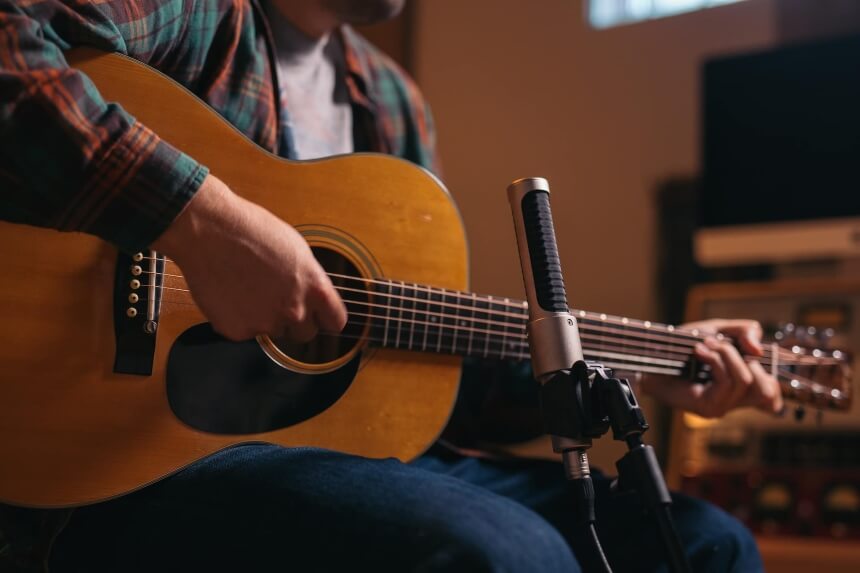 Acoustic guitars require a mix of high-fidelity sound reproduction at high frequencies and sometimes, high SPLs. This makes small-diaphragm pencil mics the natural option, although some loud country and folk guitarists regularly go for dynamic mics as well.
Acoustic guitars require a mix of high-fidelity sound reproduction at high frequencies and sometimes, high SPLs. This makes small-diaphragm pencil mics the natural option, although some loud country and folk guitarists regularly go for dynamic mics as well.
Electric guitars with an amplifier produce high SPLs, so they require a robust yet sensitive microphone. Dynamic mics are best for recording electric guitars, but some artists also like to use small-diaphragm condensers set at a distance.
Recording drums is a complex undertaking that often involves close-miking combined with overhead mics for the ensemble. However, drum kits are naturally loud, so you will want to use a microphone that can tolerate the high SPLs.
Small-diaphragm cardioids, dynamic mics, and large-diaphragms for overhead miking are all good options. These usually come in a complete set with special mics designed for the various drums such as the tom, snares, and cymbals.
 Recording pianos is a big but rewarding challenge. Because of the large frequency range of a typical piano, only condenser and ribbon mics are good enough. Small-diaphragm mics are preferred for close-miking, but omnidirectional mics are almost always preferred.
Recording pianos is a big but rewarding challenge. Because of the large frequency range of a typical piano, only condenser and ribbon mics are good enough. Small-diaphragm mics are preferred for close-miking, but omnidirectional mics are almost always preferred.
As with the acoustic guitar, miking a violin is about having a sensitive mic with good frequency sensitivity and transient response. A cardioid large-diaphragm mic gives you this sensitivity with a more lively and warm spatial sound. A properly positioned ribbon mic also works wonders.
For a professional sound, you might want to combine a close ribbon mic with a large-diaphragm condenser for best results. Just remember that mic positioning is supremely important to block unwanted noises, balance all the strings, and pick up the instrument’s body resonance.
Microphone connector types Trusted Source Microphone connector - Wikipedia Many different electrical connectors have been used to connect microphones to audio equipment—including PA systems, radios, tape recorders, and numerous other devices. en.wikipedia.org are just as important as the sound pickup patterns when it comes to sound quality. These connectors can also refer to the types of cables used to connect the mics, but that’s a whole other world of information.
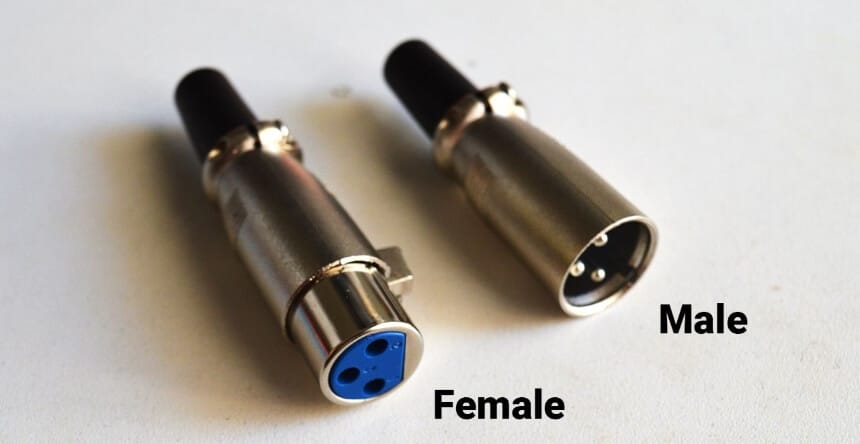 There are three types of analog microphone connectors commonly used with balanced cables (these carry a positive and negative signal as well as the ground, which enables noise cancellation).
There are three types of analog microphone connectors commonly used with balanced cables (these carry a positive and negative signal as well as the ground, which enables noise cancellation).
There are different types of XLR connectors based on the original 3-pin model. These can have as many as 7 pins, while others are mini-XLR connectors which are similar but have smaller dimensions.
Digital connectors have become much more common with the evolution of streaming and interview mics. There are different types of digital connectors and cables that can be used for sound recording including:
Streaming and home recording microphones typically only rely on USB or Thunderbolt connections.
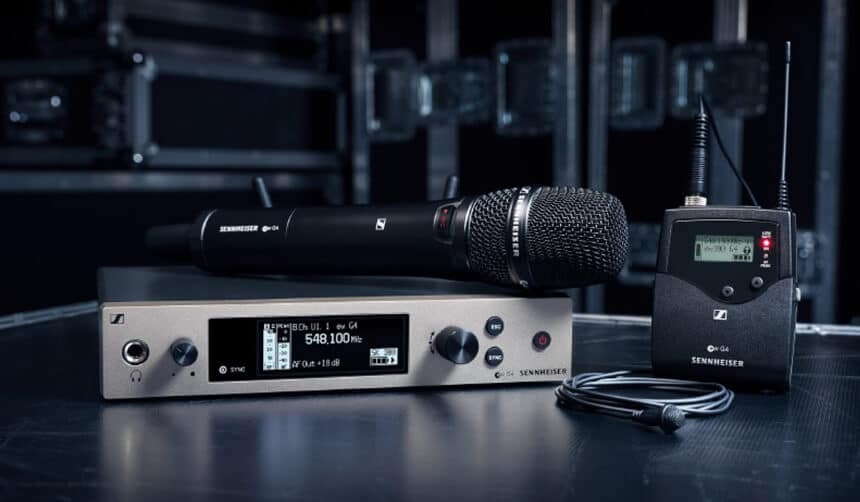 These are microphones with an attached transmitter which outputs the signal received. A separate receiver picks up the signal, processes it, and outputs it in the form of balanced XLR signals. There are different types of wireless microphones, such as these common ones.
These are microphones with an attached transmitter which outputs the signal received. A separate receiver picks up the signal, processes it, and outputs it in the form of balanced XLR signals. There are different types of wireless microphones, such as these common ones.
When shopping for different types of mics for recording, the options are seemingly endless. However, a little background information can show you why all these different types of microphones are necessary. Just like everything else to do with sound, mics are complicated and require an unhurried process of choosing.
There is just one more thing you need to know about mics – never buy them used. Most studio mics are very delicate things, and some can be damaged simply due to rough handling. This one of the kinds of recording equipment that you should never scrimp on, not ever.